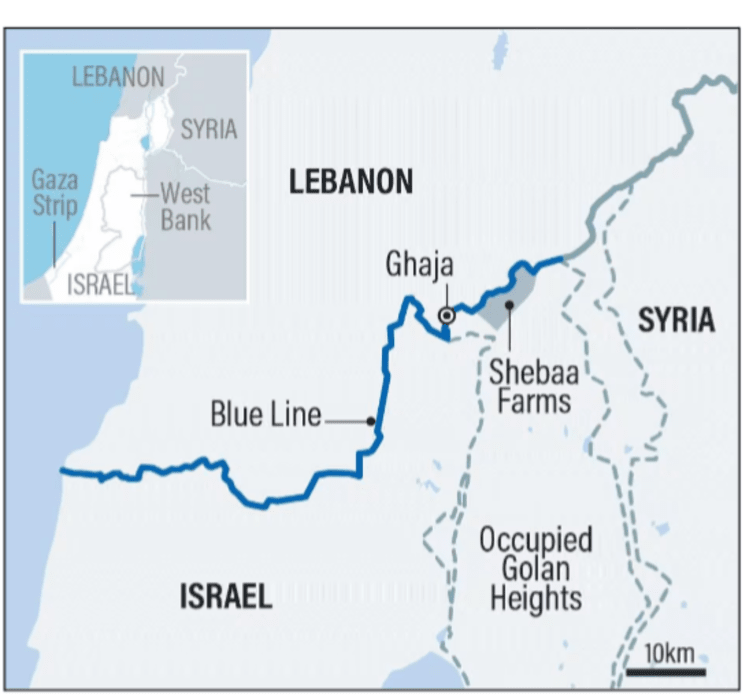News Excerpt:
The United Nations has expressed grave concerns about intensified clashes along the Lebanon-Israel frontier, known as the Blue Line.

About Blue Line:
- The Blue Line is a border demarcation between Israel and Lebanon established by the United Nations in 2000. Its primary purpose is to confirm Israel's withdrawal from Lebanon after its occupation, which lasted from 1982 to 2000.
- Establishment: The United Nations drew the Blue Line following Israel's withdrawal from southern Lebanon in May 2000. The UN aimed to verify that Israel had fully withdrawn from Lebanese territory in accordance with UN Security Council Resolution 425.
- Purpose: It serves as a line of withdrawal rather than an internationally recognized border. Its main goal is to confirm Israel's compliance with the resolution, not to act as a formal border agreement between the two countries.
- Controversies: The Blue Line has been a source of tension and occasional conflict. Disputes often arise regarding specific points along the line, especially in areas like the Shebaa Farms, which Lebanon claims but the UN recognizes as part of the Syrian Golan Heights, currently occupied by Israel.
- UNIFIL: The United Nations Interim Force in Lebanon (UNIFIL) monitors the Blue Line to help maintain peace and security in the region. UNIFIL patrols the area, helps prevent conflicts, and reports any violations of the line.
- Overall, while the Blue Line is not an official international border, it is a crucial tool for maintaining a level of stability and monitoring the cessation of hostilities between Israel and Lebanon.


